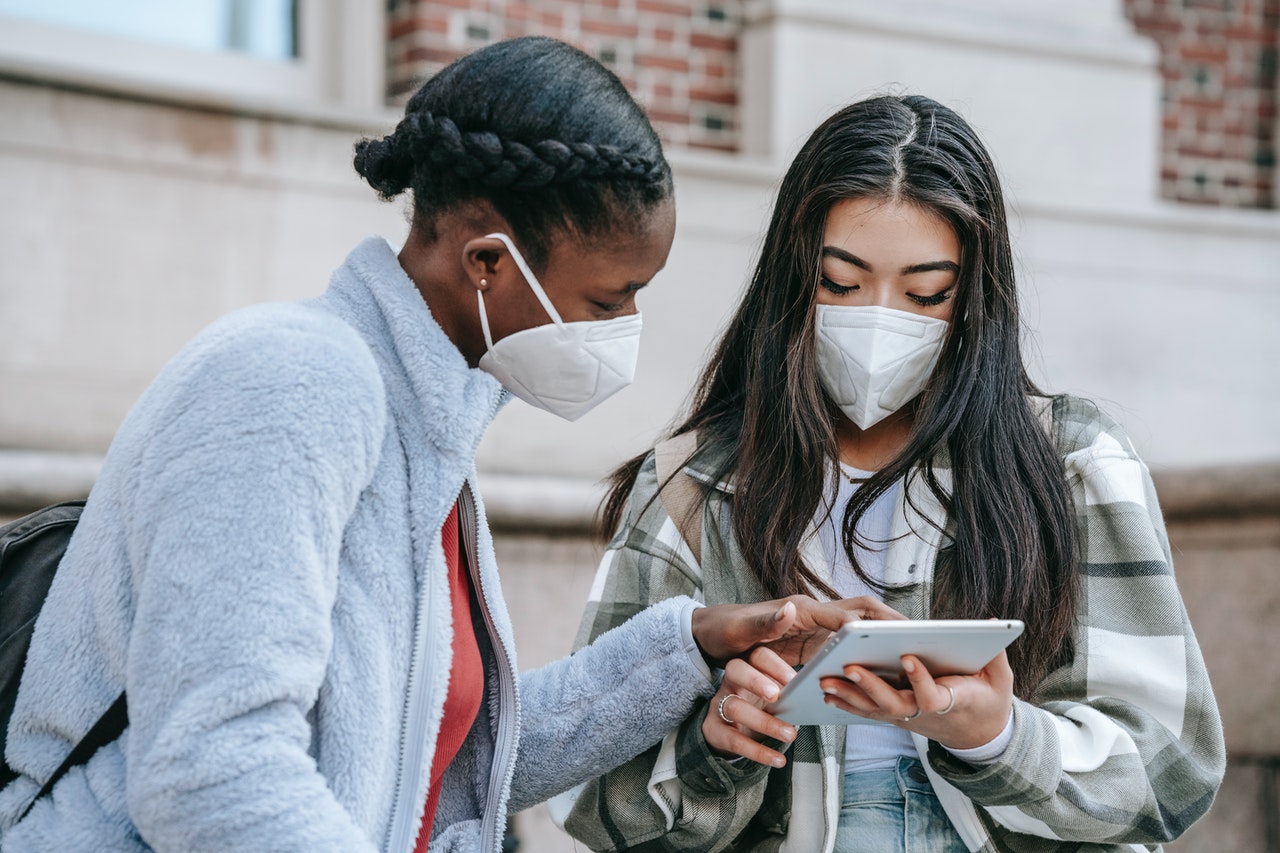[ad_1]
In March, April Abbott dragged a hospital mattress into her workplace at Deaconess Hospital in Evansville, Ind. Within the 9 months since, she has slept in it a half-dozen instances whereas working in a single day in her scientific microbiology laboratory, the place a crew of some 40 scientists toils across the clock operating coronavirus assessments.
These all-night stints within the lab pull Dr. Abbott, the director of microbiology at Deaconess, away from her husband and three youngsters, the oldest of whom is 8. A few instances every week, she heads residence for dinner, then drives again to work after the children have gone to mattress. She is on the lab when machines break. She is there to vet testing protocols for the lab. She is there when new testing websites open, flooding the lab with extra samples to course of.
“I do it as a result of there may be all the time extra work to be executed than the hours to do it in,” she mentioned.
Almost a yr right into a pandemic that has claimed greater than 272,000 American lives, some 192 million assessments for the coronavirus have been processed nationwide. Hundreds of thousands extra can be wanted to detect and include the virus within the months forward. Behind these staggering figures are hundreds of scientists who’ve been working nonstop to establish the coronavirus within the individuals it infects.
Throughout the nation, testing groups are grappling with burnout, repetitive-stress accidents and an awesome sense of doom. As provide chains sputter and laboratories rush to maintain tempo with diagnostic demand, specialists warn that probably the most extreme scarcity stymieing America’s capability to check will not be one that may be solved by a wider manufacturing line or a extra environment friendly machine. It’s a dearth of human energy: the dwindling ranks in a discipline that a lot of the general public doesn’t know even exists.
When shortages come up, “there’s workarounds for nearly all the things else,” mentioned Karissa Culbreath, the medical director and infectious illness division chief at TriCore Reference Laboratories in New Mexico. “However persons are irreplaceable.”
Within the absence of educated staff to course of and analyze the nation’s assessments, America’s diagnostic infrastructure won’t merely wrinkle and sluggish, specialists mentioned. It should collapse.
“Medical doctors and nurses are very seen, however we work behind the scenes,” mentioned Marissa Larson, a medical laboratory scientist supervisor on the College of Kansas Well being System. “And we’re underwater.”
Table of Contents
‘I don’t even know the place to start out’
The gold normal in coronavirus diagnostics hinges on a decades-old laboratory methodology known as polymerase chain response, or P.C.R. The tactic is a sign amplifier: It might probably copy genetic materials, together with fragments of the genome of the coronavirus, again and again till it reaches detectable ranges, making the virus discoverable even when this can be very scarce within the physique. P.C.R. is the metric in opposition to which all new testing strategies are in contrast; within the diagnostic panorama, few can match its skill to root out an infection.
However such accuracy comes at a value. Even extremely automated types of P.C.R. require individuals to deal with tubes, babysit machines and scrutinize ambiguous outcomes.
P.C.R.-based coronavirus assessments additionally deal in DNA, the molecular language during which the human genome is written. The coronavirus, nonetheless, shops its genetic info in an in depth cousin known as RNA, which should first be rigorously extracted from virus particles, then transformed to its extra testable counterpart earlier than diagnostics can proceed.
When laboratories are properly stocked, P.C.R. diagnostics can run from begin to end in only a few hours. However for the reason that spring, laboratories across the nation have been hamstrung by extreme, typically unpredictable shortages of chemical compounds and plasticware wanted for these protocols.
And caseloads have skyrocketed; America’s testing capability has elevated since March, nevertheless it has been vastly overtaken by the demand for assessments.
“The spring pales compared to what we’re experiencing now,” mentioned Dr. Culbreath, of TriCore, which has run greater than 600,000 coronavirus assessments.
Amid the pandemonium, labs should nonetheless work by way of their queues for different infectious illness assessments, together with for sexually transmitted infections. “Labs are attempting to keep up our normal of operation with all the things else, with a pandemic on prime of it,” Dr. Culbreath mentioned.
Darcy Velasquez, a medical technologist at Youngsters’s Hospital Colorado in Aurora, the place instances proceed to surge, is preventing to maintain tempo with a few of her establishment’s highest pattern volumes but. Her shifts within the lab start at 5:30 a.m., typically to a double-door fridge already brimming with 500 tubes, every containing a contemporary affected person swab and a small quantity of liquid — greater than a full day’s work for one individual.
Ms. Velasquez sometimes spends the primary couple hours of her day frantically attempting to clear as a lot of the backlog as she will be able to earlier than one other batch arrives round 8 a.m., when the native clinic opens.
As a lot as an hour of that point may be spent merely de-swabbing samples: manually unscrewing and rescrewing caps and plucking out swabs, all with out contaminating one pattern with the contents of one other.
“Generally you stroll into these fridges stuffed with specimens and also you suppose, ‘I don’t even know the place to start out,’” Ms. Velasquez mentioned.
At Georgia’s state public well being laboratory, direct dealing with of affected person samples should be executed with further safeguards to attenuate the probabilities of exposing personnel to infectious virus. Taylor Smith, a virologist and technologist on the lab, spends a big fraction of her workday in a full-body robe, sleeve covers, two pairs of gloves, an N95 respirator and goggles.
Merely donning all of it is exhausting. And though Ms. Smith has lengthy been deft with lab devices, the work all the time feels high-stakes, she mentioned: “You’re consistently fascinated about the way to not contaminate your self.”
To maintain their experiments operating, lab staff should be proficient mechanics. The devices wanted for diagnostic assessments weren’t constructed to run repeatedly for months on finish. However as extra services transition to 24/7 testing, malfunctions and breakdowns have grow to be extra frequent, requiring individuals to repair them.
Tyler Murray, a scientific laboratory scientist on the College of Texas Medical Department in Galveston, spends his days listening for telltale alarms — an indication that certainly one of his devices has failed or is low on chemical elements.
“I make sure that I discuss properly to them,” Mr. Murray mentioned of the lab’s machines, which he decorates with gleaming gold stars after they carry out at their greatest. “I say, ‘Hey bud, you labored onerous this week, I’m happy with you.’”
However morale is low among the many people. After 10-hour shifts at U.T.M.B., Mr. Murray heads residence and lies on the ground beside his two cats, Arya and Cleo. “The fatigue builds,” he mentioned. “You’ll be able to’t assist however really feel it.”
The invisible work power
The monotonous motions that lab staff have interaction in day by day take a bodily and psychological toll. Technologists are nursing repetitive-use accidents, a results of hours of maneuvering tubes and pipettes, which take up and dispense liquids with the press of a plunger. Employees should even be vigilant sanitizers, pausing frequently to swap out dirty gloves, clear their workspaces of plastic particles and scour surfaces with harsh chemical compounds that go away their garments freckled with stains.
“We’re accustomed to holding issues up within the background,” mentioned Natalie Williams-Bouyer, the director of the division of scientific microbiology on the College of Texas Medical Department in Galveston. “We take pleasure in doing it as a result of we all know we’re serving to individuals.”
However the enduring anonymity of testing labs has begun to splinter some spirits. Elizabeth Stoeppler, a senior medical technologist within the molecular microbiology lab on the College of North Carolina’s College of Medication, mentioned that an previous volleyball harm, which infected a tendon in her elbow years in the past, had flared up after months of lengthy stints within the lab. Just a few of her co-workers are wrestling with carpal tunnel syndrome.
The pressure has begun to have an effect on Ms. Stoeppler exterior of the lab. She bolts awake at 3 a.m., panicked about the day past’s work. She just lately began a prescription treatment to enhance her probabilities of getting a full night time’s sleep.
“There’s indicators all over the place that say, ‘Heroes work right here,’” she mentioned of her hospital. She loves her job, she added. “However no one sees us. We’re simply within the basement, or within the again.”
On a superb day in a diagnostics lab, the telephone would possibly ring just a few instances, with messages from clinicians inquiring about samples. However when “issues are going poorly, it simply rings off the hook,” mentioned Rachael Liesman, the director of scientific microbiology on the College of Kansas Well being System, the place she often clocks 15-hour shifts.
To maintain the lab on monitor, Dr. Liesman has put in some hours operating assessments herself — a process that isn’t part of her regular job description. “It’s very unusual to have your director on the bench,” mentioned Ms. Larson, a supervisor within the lab. “While you see that, some flare weapons needs to be going up.”
In mid-November, Dr. Liesman’s lab suffered a three-day stretch throughout which a provide of chemical compounds practically ran dry on a Friday, then a pair of machines failed on Saturday and Sunday.
“We had been mainly drowning in specimens” by Monday, she mentioned. “I used to be paged by three totally different suppliers whereas brushing my enamel.”
Morale within the labs has flagged because the nation continues to shatter data for caseloads, hospitalizations and deaths. The nation’s testing specialists know these statistics higher than anybody: They depend the numbers themselves, pattern by pattern. However they’re additionally simple targets of criticism and grievance.
The Coronavirus Outbreak ›
Phrases to Know About Testing
Confused by the phrases about coronavirus testing? Allow us to assist:
- Antibody: A protein produced by the immune system that may acknowledge and fasten exactly to particular sorts of viruses, micro organism, or different invaders.
- Antibody check/serology check: A check that detects antibodies particular to the coronavirus. Antibodies start to look within the blood a couple of week after the coronavirus has contaminated the physique. As a result of antibodies take so lengthy to develop, an antibody check can’t reliably diagnose an ongoing an infection. However it may establish individuals who have been uncovered to the coronavirus previously.
- Antigen check: This check detects bits of coronavirus proteins known as antigens. Antigen assessments are quick, taking as little as 5 minutes, however are much less correct than assessments that detect genetic materials from the virus.
- Coronavirus: Any virus that belongs to the Orthocoronavirinae household of viruses. The coronavirus that causes Covid-19 is named SARS-CoV-2.
- Covid-19: The illness attributable to the brand new coronavirus. The title is brief for coronavirus illness 2019.
- Isolation and quarantine: Isolation is the separation of individuals who know they’re sick with a contagious illness from those that aren’t sick. Quarantine refers to proscribing the motion of people that have been uncovered to a virus.
- Nasopharyngeal swab: A protracted, versatile stick, tipped with a comfortable swab, that’s inserted deep into the nostril to get samples from the area the place the nasal cavity meets the throat. Samples for coronavirus assessments can even be collected with swabs that don’t go as deep into the nostril — typically known as nasal swabs — or oral or throat swabs.
- Polymerase Chain Response (PCR): Scientists use PCR to make tens of millions of copies of genetic materials in a pattern. Assessments that use PCR allow researchers to detect the coronavirus even when it’s scarce.
- Viral load: The quantity of virus in an individual’s physique. In individuals contaminated by the coronavirus, the viral load might peak earlier than they begin to present signs, if signs seem in any respect.
“There may be all the time this undercurrent of, it’s by no means ok,” mentioned Dr. Abbott, of Deaconess Hospital in Indiana. “It’s devastating. We’re working as onerous as we are able to.”
Chelsa Ashley, a medical laboratory scientist at Deaconess, aches to be residence along with her three youngsters, to whom she is a single mom, after 13-hour shifts within the lab. As soon as there, she struggles to depart her work behind.
“There’s that panicked feeling that I ought to have stayed to care for our neighborhood samples,” she mentioned. “There’s guilt, while you stroll away.”
Up to now few months, Ms. Ashley’s youngsters, who’re 18, 13 and 10, have needed to grow to be considerably extra self-sufficient. Shaylan, her youngest, rouses herself from mattress at 5:50 a.m. on daily basis to spend a couple of moments along with her mom earlier than she heads off to work.
“Even when it’s solely 10 minutes, it’s 10 minutes that we discuss,” Ms. Ashley mentioned. “That’s one factor that has not modified.”
‘A dying breed’
For some, the tidal wave of stress introduced on by the pandemic has proved untenable. Since March, scientists have trickled out of laboratories, leaving chasms of experience in a discipline that for years has struggled to recruit contemporary expertise.
Joanne Bartkus, the previous director of the Minnesota Division of Public Well being Laboratory, retired from her place in Might after a dozen years on the job. She pinned one of many pandemic’s essential inflection factors to March 6, the day President Trump publicly remarked that “anyone that desires a check can get a check.”
“That was when the poop hit the fan,” Dr. Bartkus mentioned. Inside a couple of week, her crew went from receiving fewer than a dozen coronavirus testing samples every day to being inundated with roughly 1,000 day by day specimens.
It was in contrast to something Dr. Bartkus had seen in her years on the establishment. In 2009, the yr of the H1N1 flu pandemic, Minnesota’s public well being laboratory examined about 6,000 affected person samples. This spring, it broke that file in a few weeks.
Dr. Bartkus, who’s 65, had already deliberate to retire earlier than the yr was up. By the point April got here, she had hastened her timeline to Might: “It didn’t take me lengthy earlier than I mentioned, ‘OK, I’m executed with this.’”
In interviews, a number of scientists famous that they had been struggling to fill vacancies of their labs, some that had been left open by overwhelmed technologists who had just lately give up their jobs. Whereas the necessity for such staff has grown in recent times, the variety of coaching packages that construct these talent units has dropped.
“Medical technologists are a dying breed,” Ms. Stoeppler, of the College of North Carolina, mentioned.
In Indiana, Dr. Abbott, of Deaconess Hospital, mentioned her crew had already carried out greater than 100,000 assessments for the coronavirus. However probably the most chaotic months are almost certainly nonetheless forward.
For the primary time in 9 years, Dr. Abbott is doing hands-on work within the lab to assist her employees deal with rising demand. She has but to take greater than a day without work at a time for the reason that pandemic’s begin, however insists that she will be able to soldier on: “That is out of the sheer will of not eager to be overwhelmed by this pandemic.”
Within the mini-refrigerator in her workplace, subsequent to rotating luggage of salad greens and a small cavalry of Food regimen Cokes, sits an unopened bottle of champagne that she bought in March, meaning to uncork it upon reaching a worthy testing milestone. Nothing has but felt like sufficient.
“I can’t let you know what is going to really feel like a motive to have fun at this level,” Dr. Abbott mentioned. “Ask me after the subsequent 100,000 assessments.”
[Like the Science Times page on Facebook. | Sign up for the Science Times newsletter.]
[ad_2]











